DCPZ In Action, Vol. VII: Mary Beth Dillane
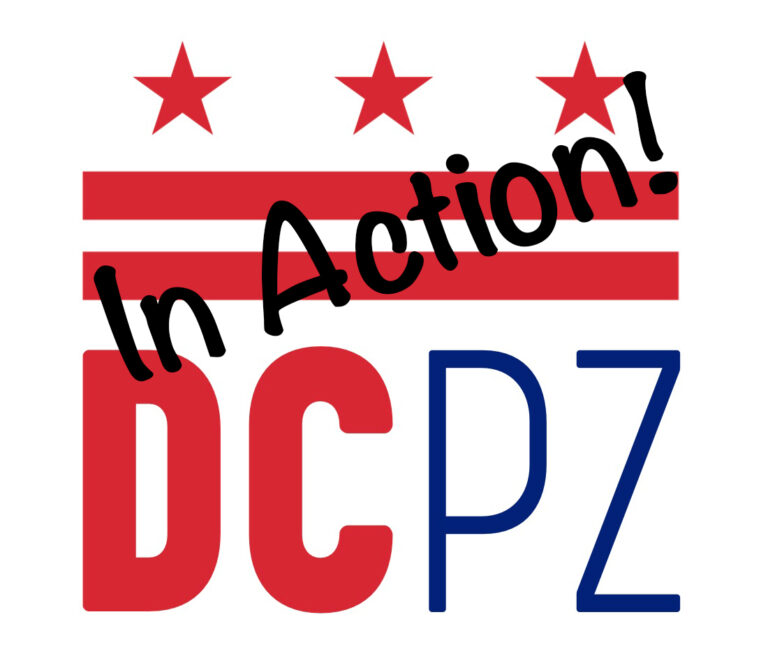
“DCPZ In Action” highlights the many ways in which DCPZ educators are using Project Zero ideas in their practice. We hope that our readers will be inspired to try something new in their own setting. Each of these articles will be posted in a DCPZ newsletter and as a blog on our Professional Development Collaborative website.
In this edition, we hear from Mary Beth Dillane, a math coach at Belvedere Elementary School (FCPS). Mary Beth was also a keynote speaker at the final plenary session at WISSIT `22, where she presented the work that her school did as part of the DC-Area Playful Schools Network.
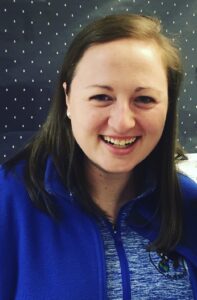
Playful Learning Fits Right In
“But where in my schedule can I fit that in?”
As one of the math coaches at Belvedere Elementary School, an International Baccalaureate Primary Years Program/Title 1-public school in Fairfax, VA, this question is often heard when teams meet together to plan. As teachers balance all the demands placed on students and themselves, particularly at the beginning of the school year, it is no wonder that they can feel overwhelmed by the hundreds of decisions they are faced with each day. There are new students, families and schedules to learn, plus routines to establish, a welcoming classroom community to create, and don’t forget about beginning-of-the-year assessments! To add play into all of that seems nearly impossible. Yet, we at Belevedere are on a journey to do just that.
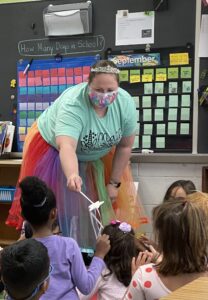
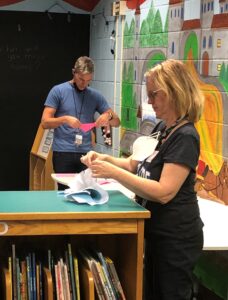
Last year, we had the privilege of participating in the DC-Area Playful Schools Network–funded by the LEGO Foundation and led by the PD Collaborative–which regularly connected several learning communities in the DMV to explore learning and playing together in our various contexts over the course of the school year. We were surprised that our teachers could take on any new learning during such a challenging time for educators, yet we were joined by over twenty of our colleagues to learn about how we could be more playful as a community. Together, with cohorts from other area schools, we learned from experts about play, making, and the power of making thinking visible, and then we were left as a learning cohort to develop our own inquiries, tinker with new ideas, and examine obstacles on our quest to play more. And play more we did!
Researchers at Project Zero’s Pedagogy of Play initiative, who kicked off our exploration last October, explain that play is central to how children learn, how they can grow in their friendships, how they form and test out hypotheses, and how they can make meaning of the world. As we returned to school, we felt that what our students needed most was to be able to interact with each other, to view school as a safe place for their ideas, to connect with the larger school community and to make sense of their worlds both during COVID and beyond. We also felt teachers needed that same sense of belonging and a space to make meaning of these challenging times. As a group of educators, we learned about the purposeful power surrounding play that encourages children to take risks, make mistakes, explore new ideas, and experience joy. We brainstormed all the characteristics of play that we value. We also drafted words to describe those ideals, and after a few iterations, we defined playful learning at Belvedere as joyful, meaningful and explorative.
Each cohort in the network brought forth evidence of play from their earliest learners to their oldest–evidence of play as a way to make meaning both for students and educators as well as invitations to play with families to build and rebuild relationships. In a year that made us realize our losses from the pandemic even more deeply, play provided the healing we were all seeking.
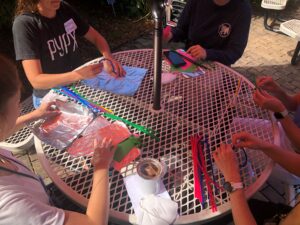
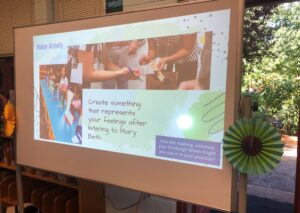
One example we found successful for purposeful play in our day was to engage in artful mathematics in our geometry units. Students K-3 used art as a way to explore and respond to new geometric concepts they were exploring. We could not have anticipated how successful that connection would be, and it led our teams to try to imagine other artful mathematics opportunities that existed beyond geometry. So far this year, our teams have used math sense-making routines, such as “Which One Doesn’t Belong?,” sorting, and patterns as other invitations for playful mathematics. Our teachers have already started making connections with authors and museum educators to bridge this connection further, but we also know there are even more opportunities to explore.
Another opportunity for play was hosted by our administration team during our virtual PTA monthly meetings last year. At each meeting, we engaged in a community-building routine that we’d learned from Playful Schools such as sharing your favorite family recipe or choosing your family’s theme song for the given month. Although these lasted only a brief few minutes, they brought joy and a focus on relationships, two key characteristics of play. As we returned this year, we have started to plan more opportunities to play with members of our larger community. Both our staff and our families desire that school to be joyful, so by engaging in play at these more formal functions, we set the tone that play is a value shared by all.
Our administrators and teachers have made a commitment to play–and how we gather together and plan together reflects that value. We are excited to reconnect with our DMV colleagues by continuing to have “playdates” during which we can learn from each other. Several of our colleagues attended professional development this summer (shout out to WISSIT `22!) to learn more about play and have already started reaching out to community partners to plan learning experiences for our students. We are eager to play even more with our students and families this school year and to continue to seek out opportunities throughout our days and units of inquiry to extend those invitations to our learners. We will continue to find opportunities to incorporate play into our virtual PTA meetings and Principal Coffees, so we can connect with families that are already seeking out these joyful moments. And, despite all the stresses placed upon each person in this building, we continue to return to play, time after time. Because being playful is not only something we strive for or value as a school, it’s also something we hope to return to whenever we need community, encouragement, and healing.
